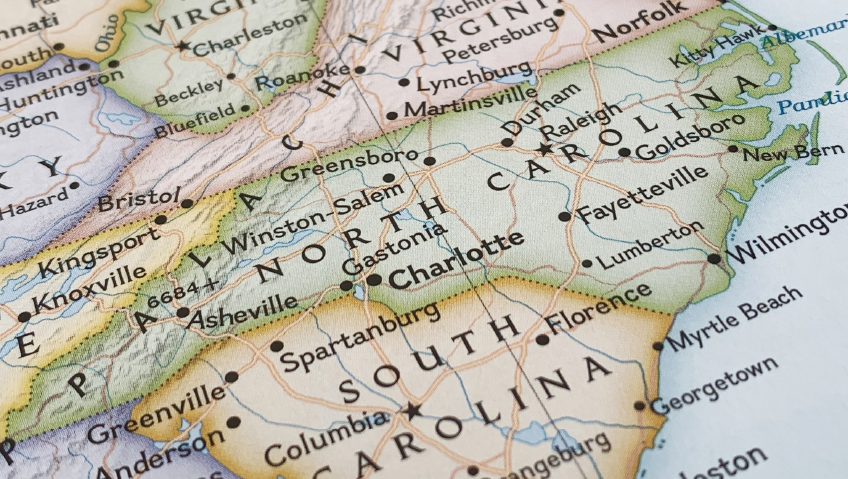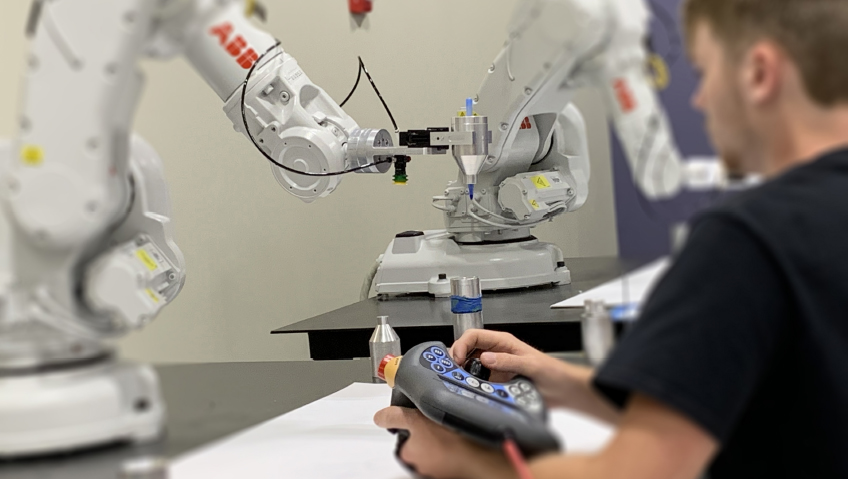Highway driving—a staple of daily commutes across the country—relies on a number of factors including attentive drivers, well-maintained roads, and adequate safety signage. Road workers labor day and night to keep routes flowing, but workers’ safety is often disregarded by drivers in the rush to reach their destination.
Enter Royal Truck & Equipment, a company dedicated to improving work zone safety, protecting both workers and drivers from injury. Founded in 1982 by Rob Roy, the company has developed a reputation for best practices in the workplace, predominantly in relation to work zone safety by incorporating superior fleet designs, particularly for TMA trucks.
A TMA (truck mounted attenuator) truck is a safety vehicle strategically positioned in a highway work zone to act as a protective barrier, shielding employees from oncoming motorists. Using an impact attenuator, also known as a crash cushion, the truck absorbs the collision’s kinetic energy to protect the impacting driver—and its need is on the rise.
“To say that work zone crashes are almost inevitable is practically an understatement at this point,” says Director of Marketing Theresa Delgado, who adds that the Associated General Contractors of America (AGC) conducted a highway work zone study in 2019 and found that 67 percent of highway contractors reported having a crash in one of their work zones that year. “The study also concluded that 73 percent of contractors reported the risk of highway work zone crashes was higher than 10 years ago.”
Looking at the crash data reported by the FHWA, 842 people died in highway work zone crashes that year compared to 757 the year prior, says Delgado, an 11 percent increase and the largest percentage increase of highway work zone fatalities since 2006. These sobering statistics mean Royal’s expertise is more needed than ever.
“When we look at why this is happening, it really comes down to a few key changes in driver behavior,” says Delgado. “We’ve got distracted driving, which is typically texting these days, and driving while being tired or under the influence. What’s interesting is that speeding has become more prevalent in work zone intrusions. This is a result of more people working from home or being out of work, so there are fewer vehicles on the road and unfortunately drivers take advantage of having more open, less congested roadways.”
The company continues to address real-life liability challenges that highway contractors face, along with potential risk-mitigating solutions in light of escalating dangerous driving across the country.
“When we look at what’s happening with the changes in how people are driving and the increases in incidents and level of severity, it’s impossible to deny that things are getting worse,” Delgado says. “What’s interesting, though, is how contractors are not only battling to keep their workers safe, but also battling in the courtroom in dealing with liability issues.”
Delgado cites an example of what could and has happened in the past: An intoxicated driver speeds into a work zone and crashes. The driver loses their life, and their surviving spouse then sues the contractor, stating there was either no warning or inadequate warning that the lane was closed. The plaintiff might also say there wasn’t enough warning of a work zone ahead.
“If that were true—that there wasn’t enough warning given and that the work zone wasn’t set up properly—the contractor would be liable,” she says. “In consulting with Greg Stefan, Vice President of Risk Control at Arch Insurance Group, we’re learning that not only has this become a more common scenario, but there’s also been a rise in nuclear verdicts: Verdicts where the jury awards an exceptional amount often surpassing $10 million.”
Historically, when it comes to liability and prevention in relation to work zone incidents, Royal’s role in safety management has focused on protection, rather than prevention.
“We’ve always focused on the integrity and design of the vehicle to ensure workers are protected as well as the impacting driver,” says Delgado. “We’re proud of how we’ve been able to accomplish this in how we build our trucks.”
This also helps with liability, she adds: If the driver of the impacting vehicle is walking away with minimal or no injuries and if the workers are protected and uninjured, there is less chance of or reason for a lawsuit. Additionally, Royal is a final stage manufacturer, meaning if an incident were to occur, the company would be liable in the event of a lawsuit. But not every TMA manufacturer has this designation.
Over the past few years, however, Royal has found that just having the TMA truck there for protection isn’t enough for contractors to minimize risk and reduce liability.
“We realized that preventing the incident is just as important as protecting the workers when an accident occurs, and we wanted to be a part of helping resolve or at least alleviate some of that pressure on our customers,” says Delgado.
With Royal’s expanding product offering, there are four key areas where the company can help minimize risk and liability: Virtual Reality Training, Connected Technology, DVR Systems, and as a part of that offering, AI Recording Systems.
When considering what it takes to prevent an accident, one clear and obvious factor is ensuring workers are properly trained, says Delgado, which is where Royal plays a significant role in safety management, facilitating multi-faceted training for contractors setting up a work zone and performing highway repairs or maintenance.
“We don’t aim to cover all aspects of training,” she adds. “Workers need to know how to properly set up the job site according to the traffic control plan, how to read the plan, how to operate the equipment, and so on. The courses and training provided by ATSSA (the American Traffic Safety Services Association) and other safety services and organizations are extremely beneficial, so our goal is not to replace traditional training, but to provide enhanced supplemental training using more technologically advanced methods.”
Royal’s Virtual Reality training provides that and beyond. These programs require a laptop and VR headset that are easily transported and distributed, and also provide on-demand training. Programs also cover a range of core skills training, from reading and setting up a traffic control plan, to tri-axle dump truck pre-trip inspection, cone retrieving, and flagging operations.
“The programs all include a testing element, so you’re able to see how well you did and what you need to work on before you even step into a live work zone,” says Delgado. “Not only does this method of training reduce the risk associated with training workers in a live, dangerous environment, but also allows you to test and evaluate job candidates or even existing employees to ensure they’re comfortable doing the job. We always say if they’re afraid to lean into traffic to retrieve cones on a moving virtual truck, they’re probably not ready to be out in real traffic yet.”
Royal has also recognized the critical issue of contractors’ liability with regards to advanced warning, and so provides connected technology solutions, specifically a line of products called ConnectedTech by iCone. These products connect to clients’ existing equipment and when activated, transmit a signal that alerts drivers of activity in their upcoming route via GPS app.
“We found this to be so important that we started adding the arrow board kit to all of our trucks last year,” says Delgado. “Now, when our customer turns on the arrow board on one of our trucks, the connected device immediately begins transmitting that vehicle’s location and traffic pattern changes like lane closures to approaching motorists.”
Earlier this year, Royal Truck also began offering a ConnectedTech kit for hazard lights which several tow and fire companies have started using, an iPin device that drops into a traffic cone, and a baton kit that attaches to any standard flagging baton. The company has also expanded its recording options after many years of offering a DVR recording system that captures footage moments before, during, and after an incident occurs.
“In recent years, we were able to integrate that system with our advanced radar board so when an incident does occur, the DVR captures not only what happened but also the speed at time of impact which can be seen overlaid on the captured footage,” explains Delgado. “As we’ve expanded our product offering and our focus to go beyond post-incident support to incident prevention, we’ve added an AI system offering that’s designed to detect events and harsh driving and provide real-time in-cab feedback to the driver while also recording to the DVR system.”
Essentially, this system includes an AI camera in the vehicle’s cab that responds to texting, smoking, using a cell phone, fatigue, tailgating, lane departure, and many other unsafe scenarios via an audible alert. The system then provides feedback to help the driver correct whatever unsafe event is occurring and decrease the likelihood of an accident, also reducing the contractor’s liability if an incident occurs.
“Our biggest challenge in helping our customers reduce liability and prevent incidents isn’t just keeping up with the ever-changing environment, but getting ahead of it,” Delgado says. “We wouldn’t have anticipated increased speeding incidents due to less traffic congestion as a result of a pandemic. I don’t think many people could’ve predicted—or even imagined—we’d be dealing with what we are dealing with at this point. But it’s real, and it’s happening, and we’re working hard day in and day out to stay on top of what these contractors are facing and working to come up with viable solutions to help.”
Delgado posits that, a few years ago, Royal would say its biggest accomplishment has been saving lives, with the quality and engineering of builds being the backbone of its success. Now, however, she says the company’s biggest accomplishment is the ability to evolve from a company that focuses on building the safest trucks possible for the greatest protection for workers, to a company that has been able to bring technology-based products to the industry to help prevent incidents and reduce liability.
Looking ahead, Royal has some “pretty lofty aspirations,” according to Delgado.
“We’ve looked at how can we make it safer for those in our industry, how can we help with accident and incident prevention, how can we help with reducing liability, and we’ve spent a lot of time focused in our own industry and highway work zones and construction,” she says. “Over the coming years we’re really starting to branch out and set some goals of working in other industries.”
For instance, Royal has sold numerous trucks and equipment in the utility industry, has been working with first responders and fire companies, and is continuously looking at products such as vehicles, virtual reality training or connected technology in order to figure where those products could be utilized, not only with preventing accidents but also protecting workers.
“Our trajectory is taking us down the path of seeing how we can bring all of these life-saving, liability-reducing products into other industries to help those folks as well,” says Delgado, adding that Royal’s vision, passion and drive means maintaining safety and continuing to develop products in the future.
“We’re very visionary here, very forward-thinking and we go beyond just a safe build,” she says. “We look at what other products we can bring to market across all different Industries where any worker is out on the highway and needs protection.”






